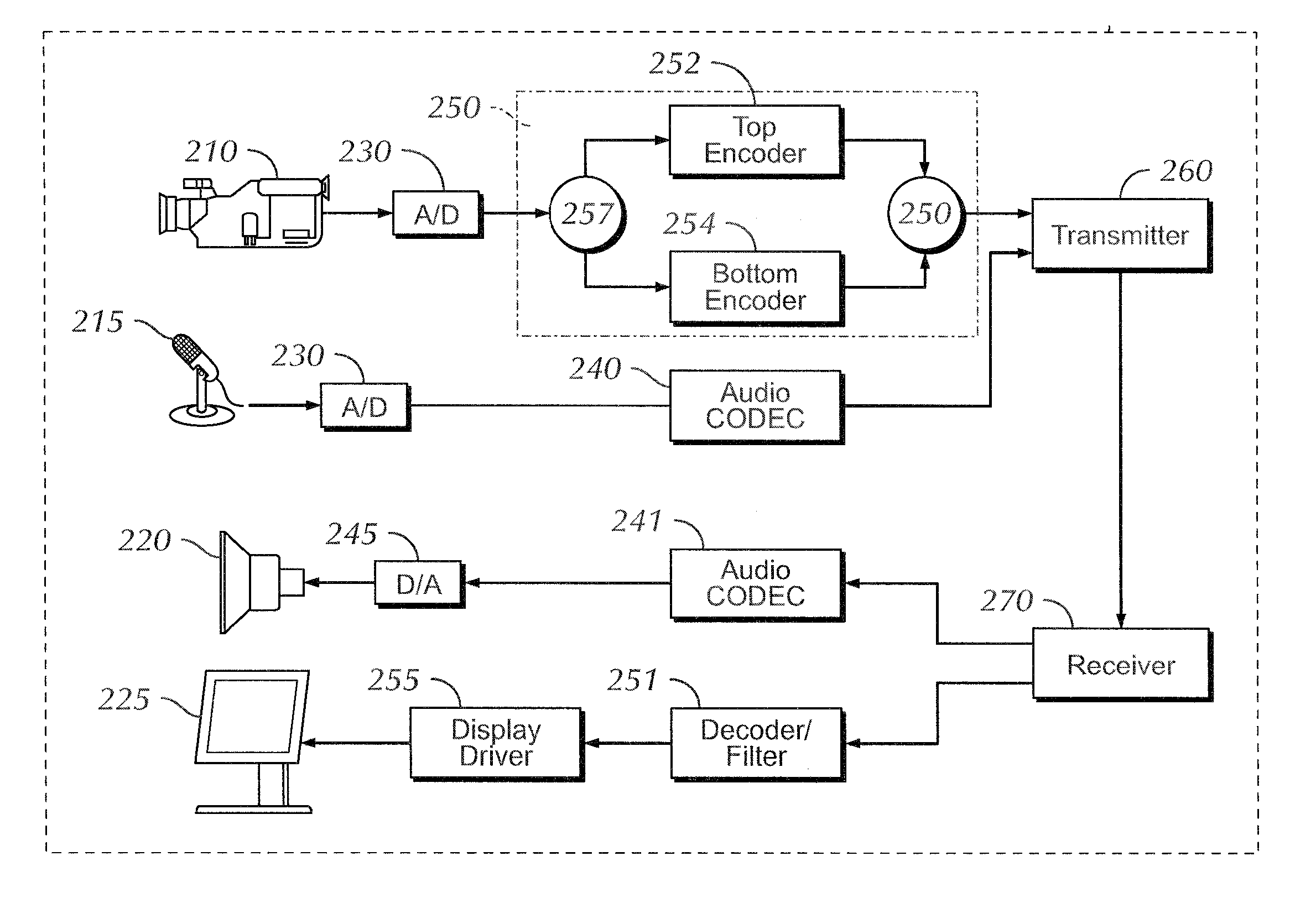System and method for decreasing end-to-end delay during video conferencing session
a video conferencing and end-to-end delay technology, applied in the field of video conferencing systems, can solve the problems of reducing the cost of hardware and transmission bandwidth required for coding and transmitting interlaced video pictures, not directly supporting interlaced video transmission, and reducing the picture quality. the effect of end-to-end delay
- Summary
- Abstract
- Description
- Claims
- Application Information
AI Technical Summary
Benefits of technology
Problems solved by technology
Method used
Image
Examples
Embodiment Construction
Introduction
[0030] To provide an overall understanding of the present invention, certain illustrative embodiments will now be described in the context of an ITU Standard H.263 video conferencing system.
[0031] It will be understood by those of ordinary skill in the art that the methods and systems described herein may be suitably adapted to other video coding techniques, such as Moving Picture Experts Group (MPEG) standards, Audio Visual Interleave (AVI), or Multiple Image Network Graphics (MNG). All such adaptations and modifications that would be clear to one of ordinary skill in the art are intended to fall within the scope of the invention described herein.
[0032] Furthermore, although the term “coding” is used herein, those of ordinary skill in the art will appreciate that the reciprocal decoding function is also implicated in the use of present invention. Accordingly, all references to coding techniques are to be understood to include decoding techniques unless specifically ...
PUM
 Login to View More
Login to View More Abstract
Description
Claims
Application Information
 Login to View More
Login to View More - R&D
- Intellectual Property
- Life Sciences
- Materials
- Tech Scout
- Unparalleled Data Quality
- Higher Quality Content
- 60% Fewer Hallucinations
Browse by: Latest US Patents, China's latest patents, Technical Efficacy Thesaurus, Application Domain, Technology Topic, Popular Technical Reports.
© 2025 PatSnap. All rights reserved.Legal|Privacy policy|Modern Slavery Act Transparency Statement|Sitemap|About US| Contact US: help@patsnap.com



